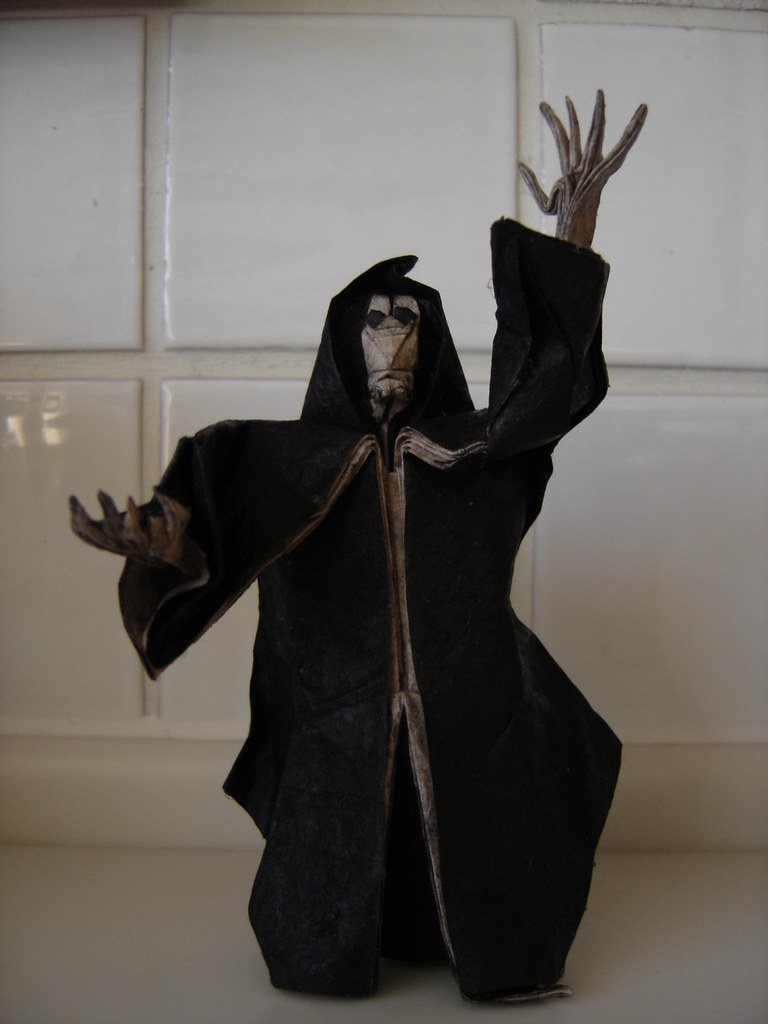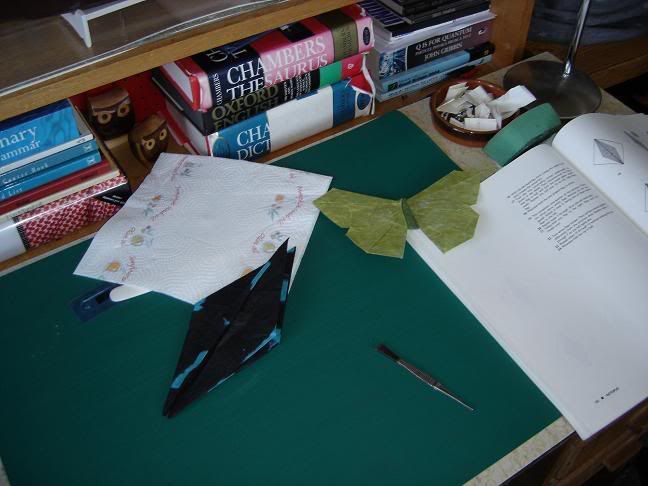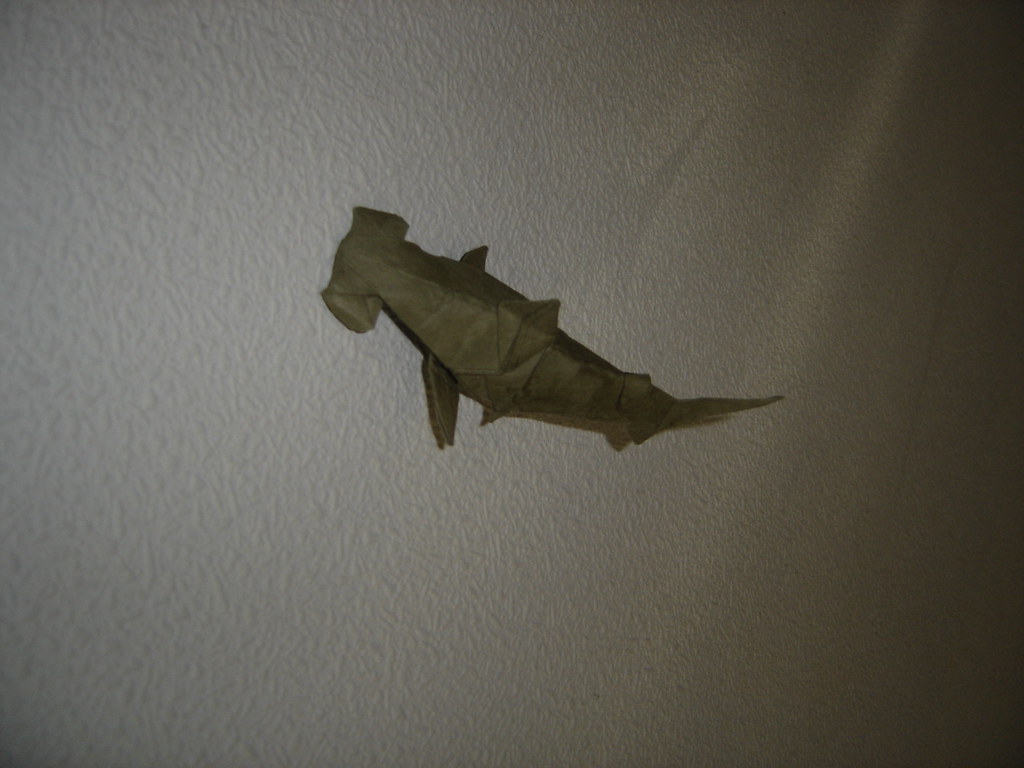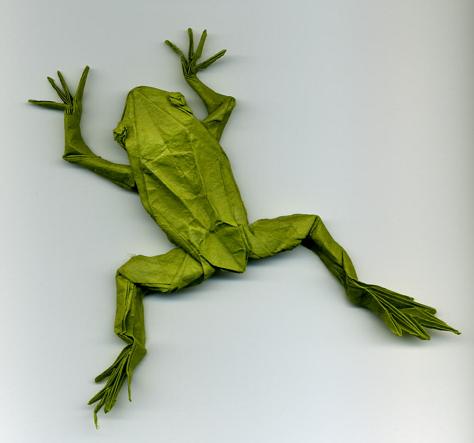
Of all the techniques that have become part and parcel of modern origami, Wet Folding must be the most indispensable. This involves dampening the paper slightly before making the creases. The added moisture temporarily dissolves the sizing (the water-soluble adhesive that holds the paper together) allowing the fibres to be shifted and then set in a slightly different position. In essence you are manipulating both the shape of the paper and its underlying physical structure. This enables folders to sculpt the material, creating softer, longer-lasting creases and curves, which add an element of realism to models.
Wet folding was the brainchild of Akira Yoshizawa - the father of modern Origami, whose goal was to create lifelike, three-dimensional animals and plants. One of the first western folders to embrace the technique was Michael LaFosse.
This Horseshoe Crab, designed by LaFosse, is eight inches long. Evidence of wet folding can be seen in the curve of the prosima, which is a little more pointed than I would like - I was hoping for something rounder. My addition to the model is the triangular bulge on its back, which is supposed to represent the raised part of the shell that runs along the centre of the opistoma. This was also achieved by wet folding.
I made the model from Elephanthide paper. I like the way that the camera flash reflected off the shiny surface of the paper, giving the crab the appearance of having just crawled out of the water.





